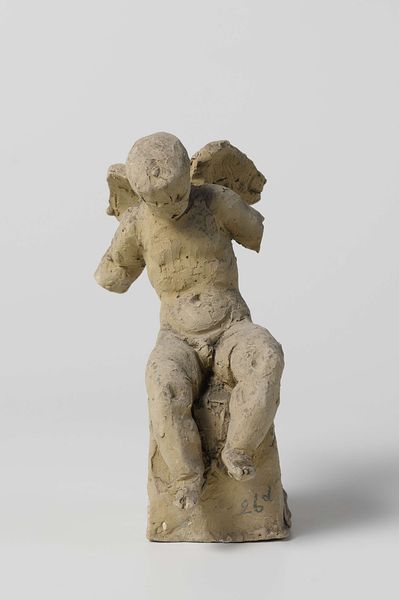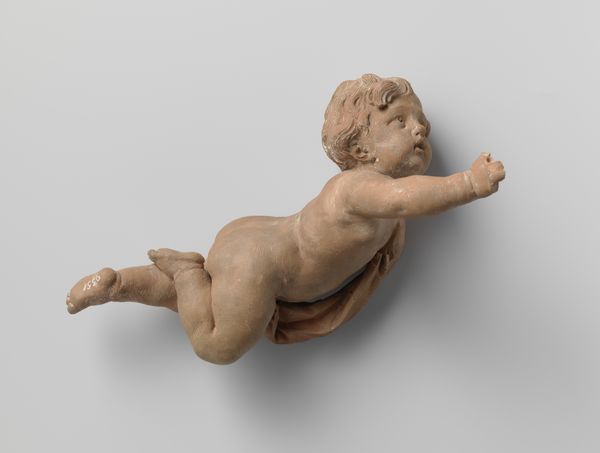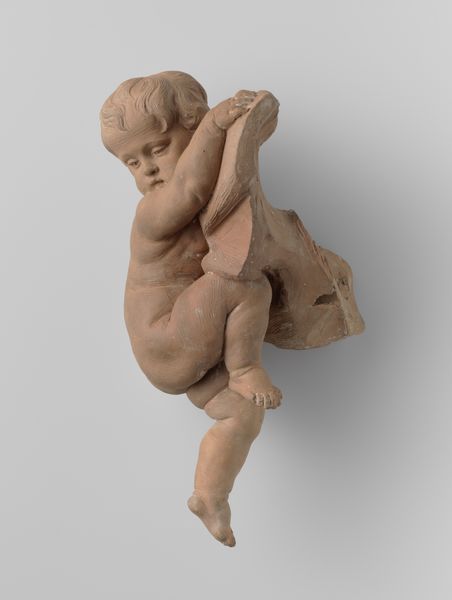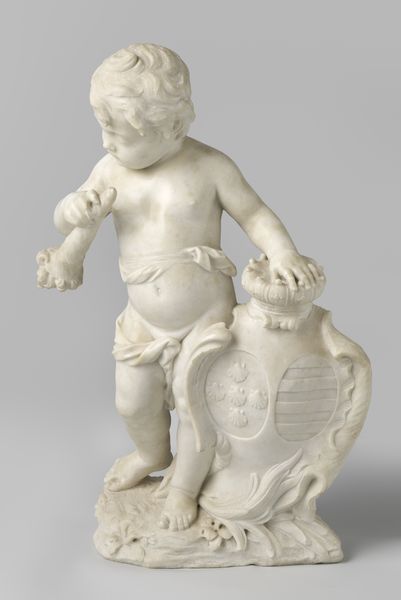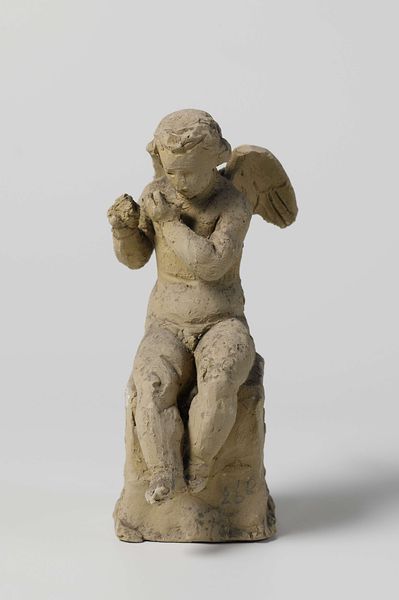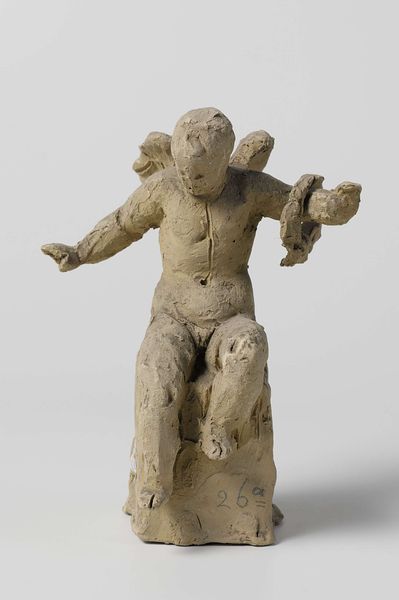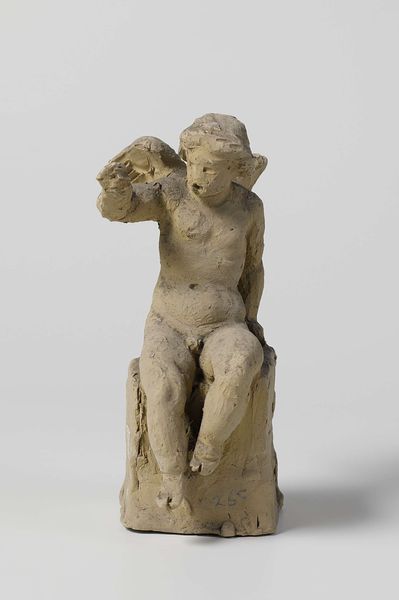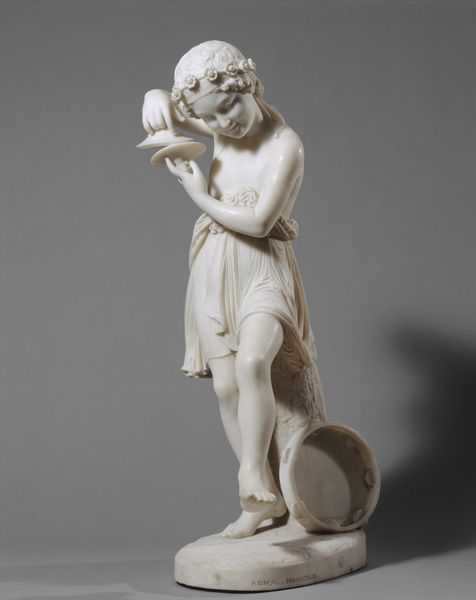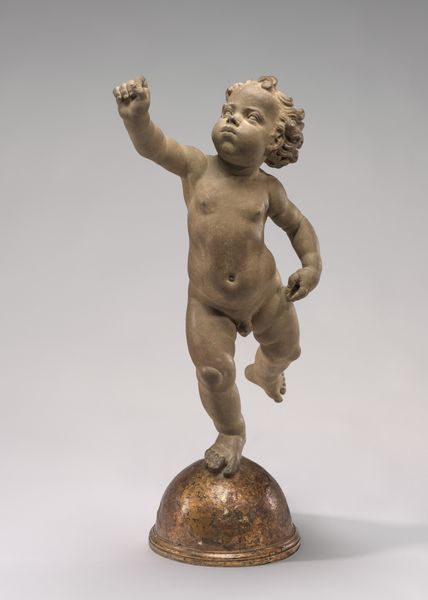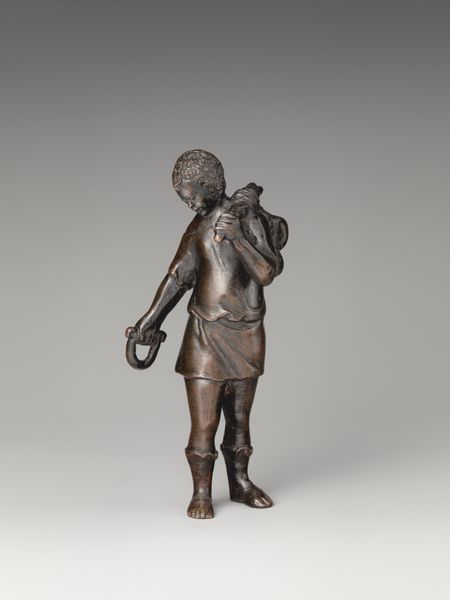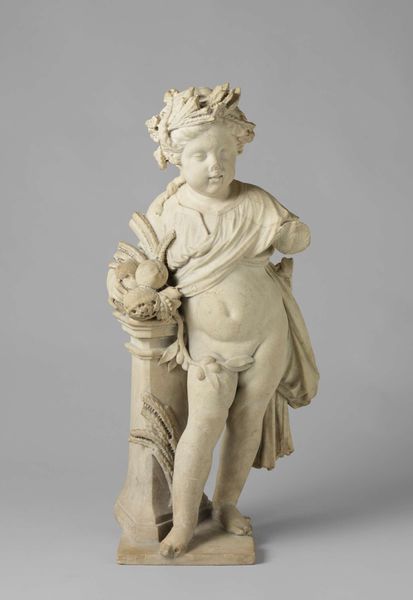
sculpture, terracotta
#
portrait
#
baroque
#
figuration
#
sculpture
#
terracotta
Dimensions: height 27 cm, width 13 cm, depth 10.5 cm
Copyright: Rijks Museum: Open Domain
Curator: Ah, yes. Here we have Jan Baptist Xavery’s terracotta sculpture, titled “Study for a Hovering Putto,” created sometime between 1735 and 1750. Editor: It’s… charmingly precarious, isn’t it? All plump cheek and questionable aerodynamics. I get a slightly worried vibe. Like he’s about to tumble, cherubic backside first, into something unpleasant. Curator: Baroque sculpture often aimed for dynamic, expressive compositions, and Xavery was a master of imbuing clay with a sense of lively movement. Of course, this piece was created during a time when aristocratic patronage shaped the art world considerably, demanding both grandeur and decorative elements. Putti like this were quite the rage in those days, adorning everything from ceilings to garden fountains. Editor: You know, looking closer, that precariousness is beautifully rendered, it captures a specific feeling, that momentary suspension right before… well, anything. I appreciate that it seems kind of sketch-like. Not perfectly resolved. Curator: This is, after all, a "study". We’re witnessing the artist's process, capturing an idea in three dimensions. Its slightly unfinished quality gives us a direct line to Xavery's thinking, his hands molding the clay. The social function of these preliminary studies was less about public display, more about preparation for larger, commissioned projects. Editor: Which gives it an intimacy a "finished" work might lack. Do you think he had an actual child model or was it entirely from imagination? There's such distinct personality, especially around the mouth and those chubby little hands. Curator: It is likely the artist would make use of models in his work to achieve a degree of realism, even in idealized depictions like this. We can't ignore how sculptural trends spread among regions through training programs and travel. Italian Renaissance approaches, for instance, found their way to Northern workshops such as Xavery's. Editor: True. I also love the color, it grounds it somehow. Makes it seem less like heavenly fluff and more… earthy. Perhaps this chubby fellow is meant to be slightly irreverent. Like he’s thinking about sneaking into the wine cellar more than delivering messages from on high. Curator: Well, considering its age, this sculpture bears interesting stories and implications concerning the institutional functions of art. The Baroque aesthetic itself becomes a symbol of power and status, and studying pieces such as "Study for a Hovering Putto" allows us to critically consider the art market back in that era, along with patronage structures, workshop systems, and the social currency attached to artistic achievement. Editor: And sometimes it’s just about a chubby clay angel on the verge of taking a dive, reminding us that perfection is overrated, and a little wobbly imperfection is way more fun. Curator: Indeed. Approaching the object with multiple contextual frameworks really deepens our appreciation. Editor: I’m still hoping that angel will be okay though!
Comments
No comments
Be the first to comment and join the conversation on the ultimate creative platform.
